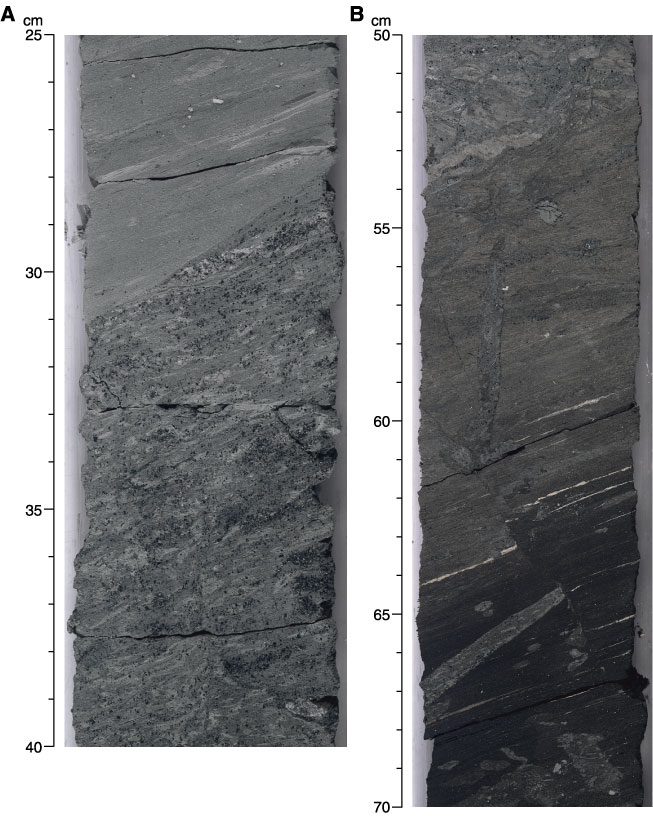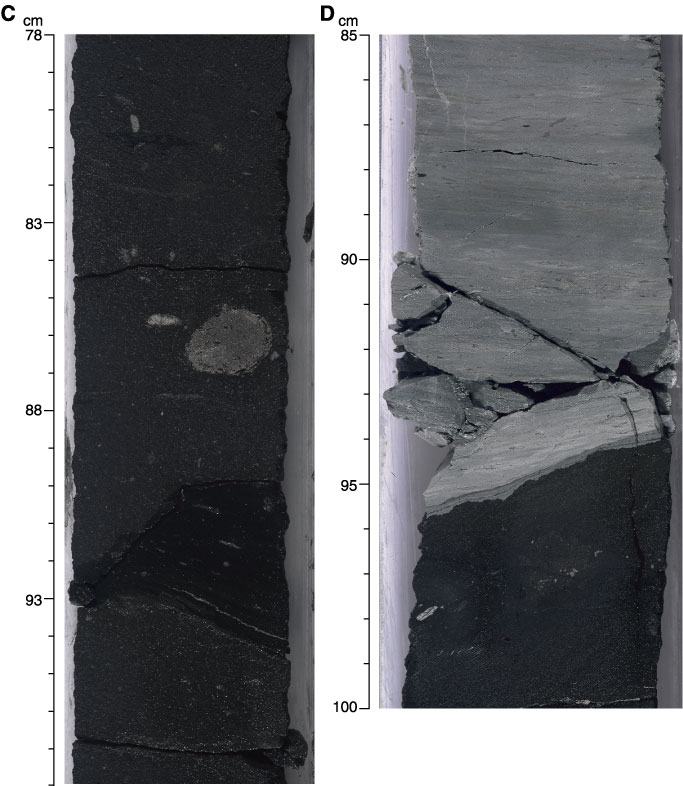
Figure F6. Close-up photographs of representative lithologies for the transition from calcareous nannofossil clay in lithostratigraphic Unit III to black shale in lithostratigraphic Unit IV. A. The transition from calcareous nannofossil clay of Unit III (25–31 cm) (note the distinct burrows) into the basal glauconitic interval of Unit III (31–40 cm) (interval 207-1258B-44R-2, 25–40 cm). B. The transition from glauconitic interval via leached brownish laminated sediments (Unit III) into black shale (Unit IV; note burrows with glauconite in laminated black shale) (interval 207-1258B-44R-2, 50–70 cm).
C. Gravity flow deposit without obvious internal fabric in the
uppermost part of Unit IV (interval 207-1258B-44R-3, 78–98 cm). The sediment
contains phosphatic nodules, a clast of laminated black shale, and shell
fragments. D. Sharp contact (96 cm) between calcareous
nannofossil clay of Unit III and laminated black shale of Unit IV (interval
207-1258C-15R-3, 85–100 cm). The basal sediment of Unit III contains poorly
preserved radiolarians, glauconite, quartz, and feldspar. The fabric of the
black shale in the topmost few centimeters is strongly disturbed.



